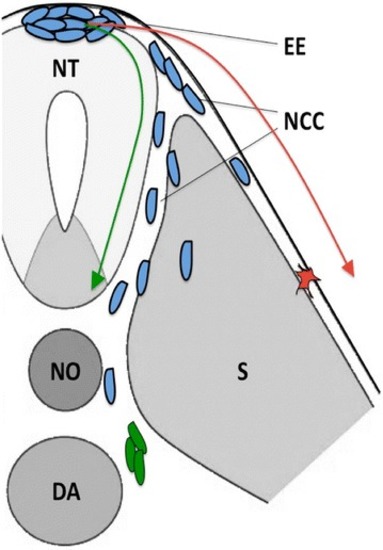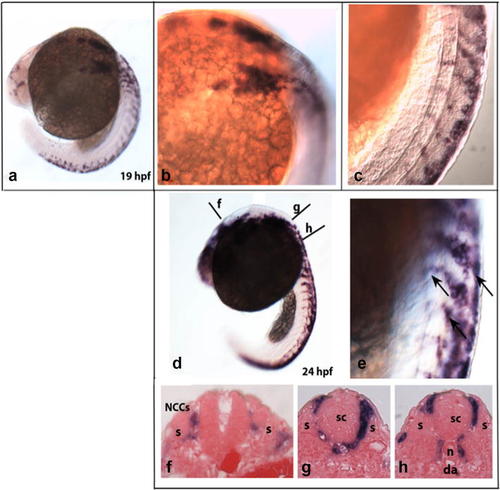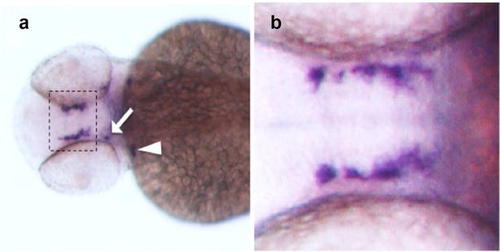- Title
-
The zebrafish as a model for studying neuroblastoma
- Authors
- Corallo, D., Candiani, S., Ori, M., Aveic, S., Tonini, G.P.
- Source
- Full text @ Cancer Cell Int.
|
Patterns of NCC migration in zebrafish. Schematic cartoon depicting the two main migratory pathways of NCCs during embryonic development (transverse section of a vertebrate embryo). NCCs ( |
|
Expression of crestin in neural crest cells (NCCs) during zebrafish development. |
|
Expression of TH by fully differentiated sympathetic neurons in zebrafish. |



